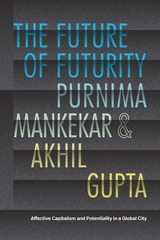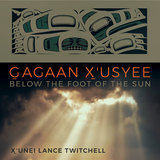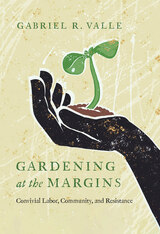3 books about Keetley, Dawn
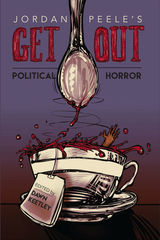
Jordan Peele's Get Out
Political Horror
Edited by Dawn Keetley
The Ohio State University Press, 2020
Jordan Peele’s Get Out: Political Horror is a collection of sixteen essays devoted to exploring Get Out’s roots in the horror tradition and its complex and timely commentary on twenty-first-century US race relations. The first section, “The Politics of Horror,” traces the influence of the gothic and horror tradition on Peele’s film, from Shakespeare’s Othello, through the female gothic and Ira Levin’s Rosemary’s Baby and The Stepford Wives, to the modern horror film, including the zombie, rural, suburban, and body-swap subgenres of horror. The second section, “The Horror of Politics,” takes up Get Out’s varied political interventions—notably its portrayal of the continuation of slavery and the deformation of the black body and mind in white, so-called progressive America. Contributors address Peele’s film alongside African American figures such as Nat Turner, W. E. B. Du Bois, and James Baldwin. Taken together, the essays illuminate how Get Out stands as both a groundbreaking intervention in the horror tradition as well as a devastating unmasking of racism in the contemporary United States.
[more]
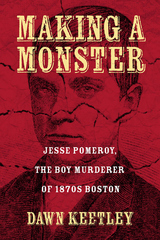
Making a Monster
Jesse Pomeroy, the Boy Murderer of 1870s Boston
Dawn Keetley
University of Massachusetts Press, 2017
When twelve-year-old Jesse Pomeroy tortured seven small boys in the Boston area and then went on to brutally murder two other children, one of the most striking aspects of his case was his inability ever to answer the question of why he did what he did. Whether in court or in the newspapers, many experts tried to explain his horrible acts—and distance the rest of society from them. Despite those efforts, and attempts since, the mystery remains.
In this book, Dawn Keetley details the story of Pomeroy's crimes and the intense public outcry. She explores the two reigning theories at the time—that he was shaped before birth when his pregnant mother visited a slaughterhouse and that he imitated brutal acts found in popular dime novels. Keetley then thoughtfully offers a new theory: that Pomeroy suffered a devastating reaction to a smallpox vaccination which altered his brain, creating a psychopath who revealed the human potential for brutality. The reaction to Pomeroy's acts, then and now, demonstrates the struggle to account for exactly those aspects of human nature that remain beyond our ability to understand.
In this book, Dawn Keetley details the story of Pomeroy's crimes and the intense public outcry. She explores the two reigning theories at the time—that he was shaped before birth when his pregnant mother visited a slaughterhouse and that he imitated brutal acts found in popular dime novels. Keetley then thoughtfully offers a new theory: that Pomeroy suffered a devastating reaction to a smallpox vaccination which altered his brain, creating a psychopath who revealed the human potential for brutality. The reaction to Pomeroy's acts, then and now, demonstrates the struggle to account for exactly those aspects of human nature that remain beyond our ability to understand.
[more]
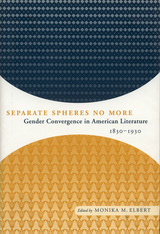
Separate Spheres No More
Gender Convergence in American Literature, 1830-1930
Monika Elbert
University of Alabama Press, 2000
Examines the intersection of male and female spheres in American literature
Although they wrote in the same historical milieu as their male counterparts, women writers of the 19th- and early 20th-centuries have generally been "ghettoized" by critics into a separate canonical sphere. These original essays argue in favor of reconciling male and female writers, both historically and in the context of classroom teaching.
Although they wrote in the same historical milieu as their male counterparts, women writers of the 19th- and early 20th-centuries have generally been "ghettoized" by critics into a separate canonical sphere. These original essays argue in favor of reconciling male and female writers, both historically and in the context of classroom teaching.
While some of the essays pair up female and male authors who write in a similar style or with similar concerns, others address social issues shared by both men and women, including class tensions, economic problems, and the Civil War experience. Rather than privileging particular genres or certain well-known writers, the contributors examine writings ranging from novels and poetry to autobiography, utopian fiction, and essays. And they consider familiar figures like Harriet Beecher Stowe, Emily Dickinson, and Ralph Waldo Emerson alongside such lesser-known writers as Melusina Fay Peirce, Susie King Taylor, and Mary Gove Nichols.
Each essay revises the binary notions that have been ascribed to males and females, such as public and private, rational and intuitive, political and domestic, violent and passive. Although they do not deny the existence of separate spheres, the contributors show the boundary between them to be much more blurred than has been assumed until now.
[more]
READERS
Browse our collection.
PUBLISHERS
See BiblioVault's publisher services.
STUDENT SERVICES
Files for college accessibility offices.
UChicago Accessibility Resources
home | accessibility | search | about | contact us
BiblioVault ® 2001 - 2025
The University of Chicago Press



